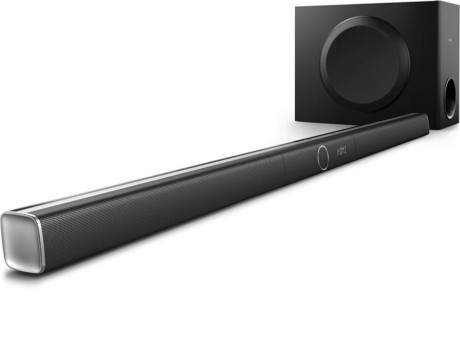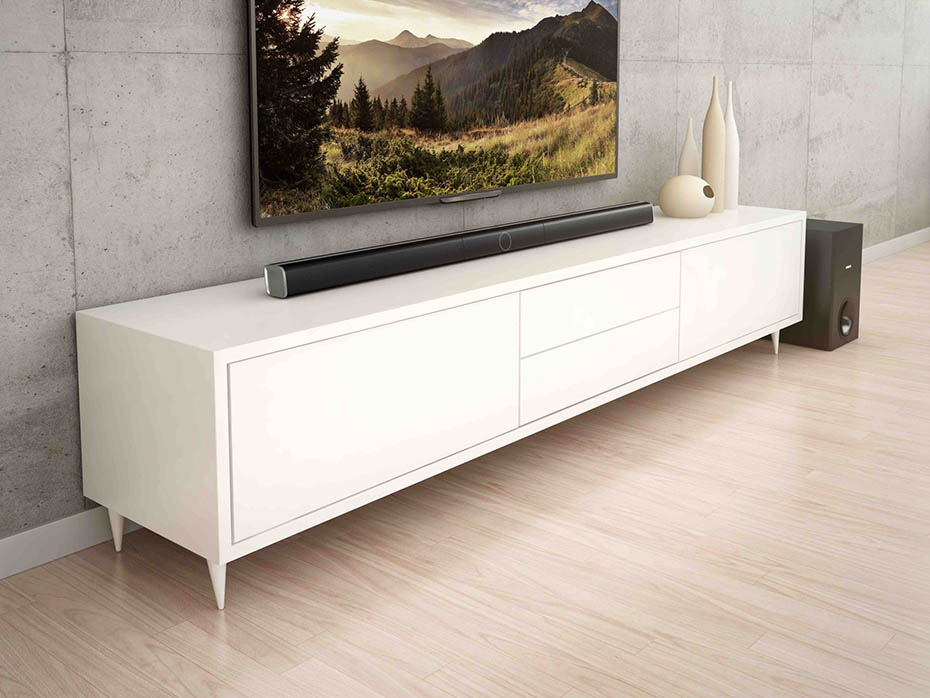The Philips soundbar came in a somewhat suspiciously small box, which we thought could only have room for a subwoofer. It turned out that the soundbar comes in three parts that must be assembled. It is the thinnest of the test, so if you find a place to hide the wireless subwoofer, there is little that will attract anyone’s attention.
The soundbar has an HDMI input and one output, but since they don’t support 4K video from Blu-ray, all sources must be connected to the TV with HDMI, then to connect the soundbar to the TV’s audio return channel (ARC). It works fine. Alternatively, you can use the optical digital input.
The soundbar connects to the wireless network using the app HCWeSet. Follow the instructions in the app, it’s easy. To stream music, Philips uses Google Cast. It’s super easy. You just open the app that you use for your music, and touch a virtual key in the app that makes the soundbar take over as an audio source instead of the mobile phone. Your mobile phone is now turned into a remote control. If you have multiple Google Cast products in your home, these can be combined so that they play the same music throughout the house. Google Cast supports many streaming services, including Spotify, Tidal and Deezer. But not currently Apple music or the local music player on the iPhone.
Sound quality
I must admit I was sceptical as to whether this thin soundbar would be anything special. Thank goodness I am able to put some of my prejudices aside. The problem with thin soundbars is that they often struggle to play well with the subwoofer, as it frequently turns out that vocalized consonants come from the soundbar while the vowels – vocalzation from the diaphragm – come from the subwoofer. The subwoofer must then be placed very close to the soundbar so that it doesn’t sound quaint.
In this case, it sounds far more decent than anticipated. The voices in the movie are clear and open. With the surround feature enabled, the soundscape spreads uniformly throughout the room without compromising the voice rendition. This is because the centre channel has been equipped with separate speakers. The wireless subwoofer also reproduces the bass effects quite well.
There is a lack of shade in the overtones. Raindrops are reminiscent of tiny glass crystals hitting the ground. There’s also a gap between the subwoofer and the soundbar, but you don’t think much about it during a movie.
The problem arises with music, where the bass instruments sound rather monotonous and unnuanced. You don’t really hear the string plucking on a bass guitar, just the body. Vowels sound clear, but the whole thing becomes a little thin.
Conclusion
Despite the low price, Philips soundbar provides fairly good sound on film with clear dialogue. For music, we’d like more air in the cymbals, and the soundscape is too constricted — the stereo perspective is virtually non-existent.
The Philips soundbar works on the whole perfectly fine. We like streaming with the Google Cast. This is a nice choice if you want a thin and affordable soundbar.


We think
The balance in the sound is fine, and the soundbar simulates surround sound quite well. Google Cast provides great usability for streaming. We want more overtones, and the stereo perspective on the music should be wider.
3490 €
Specifications
- HDMI: 1 input, 1 output (ARC)
- Digital input: Optical
- Network: Wi-Fi, ethernet
- Wireless: Google Cast, Bluetooth (NFC)
- Analogue in: 3.5 mm minijack
- Subwoofer: Wireless
- W x H x D: 110 x 5.1 x 6.9 cm
- Colour: Black

